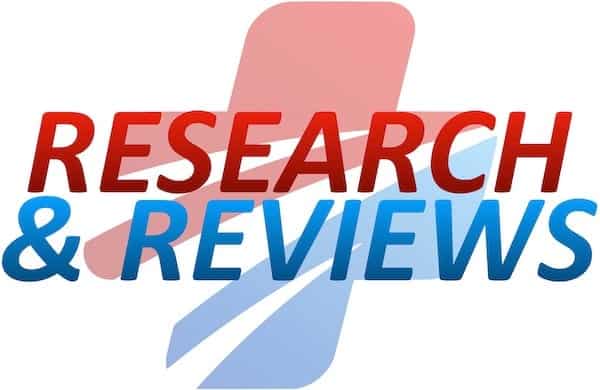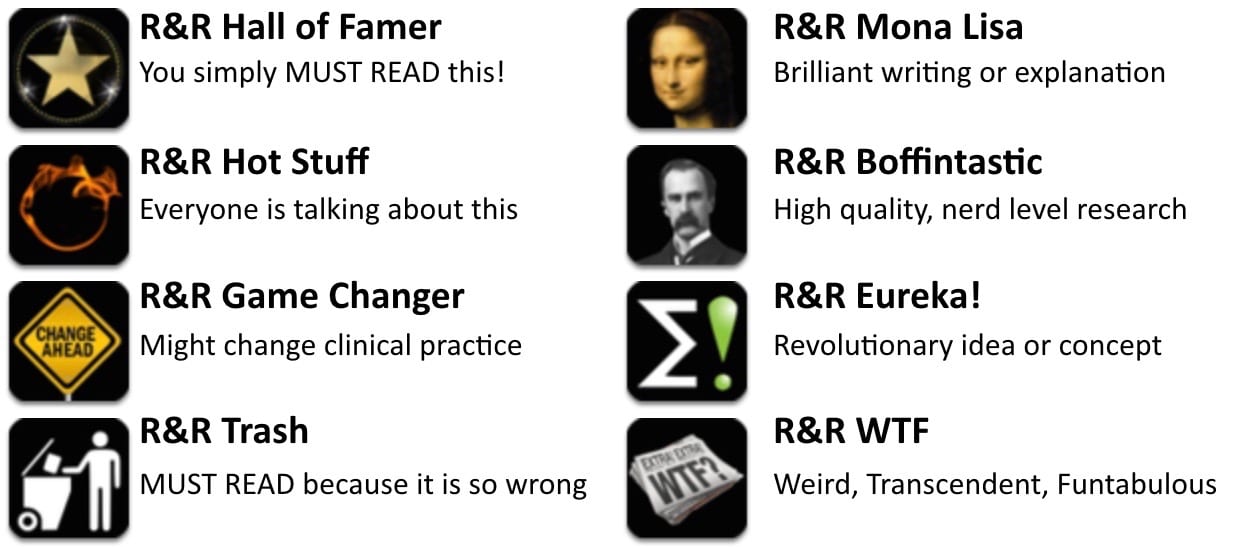R&R In The FASTLANE 174
Welcome to the 174th edition of Research and Reviews in the Fastlane. R&R in the Fastlane is a free resource that harnesses the power of social media to allow some of the best and brightest emergency medicine and critical care clinicians from all over the world tell us what they think is worth reading from the published literature.
This edition contains 5 recommended reads. The R&R Editorial Team includes Jeremy Fried, Nudrat Rashid, Soren Rudolph, Anand Swaminathan and, of course, Chris Nickson. Find more R&R in the Fastlane reviews in the : Overview; Archives and Contributors
This Edition’s R&R Hall of Famer
Shandro J et al. Human Trafficking: A Guide to Identification and Approach for the Emergency Physician. Annals of emergency medicine. 68(4):501-508.e1. 2016. PMID: 27130802
- Human trafficking is a tragic problem. We play a vital role in ending slavery as emergency care providers. I recommend reading this article so you can learn how to spot the signs of trafficking. For a brief synopsis, you can read the post at the link below.
- Recommended by: Clay Smith
Barnett et al. Opioid-Prescribing Patterns of Emergency Physicians and Risk of Long-Term Use. N Engl J Med. 2017;376(7):663-673. PMID: 28199807
- It is reasonable to posit that Emergency Physicians who prescribe opiates with a more permissive threshold give rise to additional downstream long-term use, but this paper’s methodology hangs by several flimsy threads.
- Recommended by: Ryan Radecki
- Further reading: The emergency narcotic dispensary (EM lit of note); The case of the aimless company (EM Nerd)
Hodgson C, Cuthbertson BH. Improving outcomes after critical illness: harder than we thought! Intensive care medicine. 42(11):1772-1774. 2016. 27836316
- Hodgson and Cuthbertson’s commentary on the recent RAPIT trial is an excellent, yet concise, analysis of the difficulties in determining whether complex interventions improve patient-centered outcomes in the critically ill. These studies keep turning up negative – much to our disappointment – and there are many possible reasons why.
- Recommended by: Chris Nickson
Numé AK et al. Syncope and Motor Vehicle Crash Risk: A Danish Nationwide Study. JAMA internal medicine. 176(4):503-10. 2016. PMID: 26927689
- Lots of potential problems any time you try to make conclusions from databases, but one number really stood out to me in this paper: 4.4%. For patients presenting with first time syncope, they had a 4.4% chance of being in a significant MVC (requiring emergency department care) in the next 2 years. Hard to know how this applies to different populations, but discussing driving with our patients is essential.
- Recommended by: Justin Morgenstern
Rhodes A et al. Surviving Sepsis Campaign: International Guidelines for Management of Sepsis and Septic Shock. Crit Care Med 2017 [epub ahead of print] PMID: 28101605
- The 2016 Surviving Sepsis Campaign: International Guidelines for Management of Sepsis and Septic Shock just published. Going through the ABC’s of resuscitation (Identification, Fluid Resuscitation, and Antibiotics) the recommendations made are:
- Screening for sepsis is recommended, however not much is said about the use of SIRS vs qSOFA.
- Recommend at least 30cc/kg of IV crystalloid be given within the first 3 hours. Hopefully everyone agrees this is not the case (i.e ESRD, CHF).
- Target a MAP of 65mmHg and norepinephrine is the recommended as the first-choice vasopressor, but second line pressors have been updated to vasopressin (up to 0.03 U/min) or epinephrine
- Early, appropriate broad empiric antibiotics are now recommended within one hour of sepsis identification. As a side note double coverage of pseudomonas is not recommended.
- Recommended by: Salim R. Rezaie
Community emergency physician with a passion for education, evidence based medicine, and life, working in the Greater Toronto Area (that’s in Canada) | @First10EM | Website |






